Here’s a scenario many breweries have faced over the last few years: You found the perfect location, you’ve been open a year or maybe a few, business is going well. It’s time for the next step. But what does that look like? Should you open up a second taproom? And if the answer is yes, should you open in the same city? A different one? A different state?
And if you do open up another space, how do you manage all of them?
All great questions. And we can say for sure that there isn’t a one-size-fits-all answer.
But breweries of all sizes have been opening multiple locations. Just in the last couple of years we’ve seen stalwarts like Weathered Souls announce a new location in Charlotte, NC, Humble Sea expand into two locations across California, Other Half grow to seven locations, Finback Brewery move into a new spot in Brooklyn with another in LIC on the way, Monday Night Brewing spread out in new taprooms across three different states with a fourth on the way, and so many more.
Whether a big or small brewery, considering multiple locations is a normal practice in today’s industry.
So we spoke with two well-known craft breweries who have both opened multiple locations—Finback Brewery in Queens, NY, and Monday Night Brewing—to learn the advantages of expanding, tips on operating multiple taprooms, and advice on even deciding if a new taproom is the right fit for you.
Above Image: Monday Night Brewing’s fourth location in Nashville, TN | Photography courtesy of Jonathan Baker, Monday Night Brewing
What We’ll Cover in This Piece:
The First Step to Deciding to Open Another Location

Monday Night Brewing’s second location in Atlanta, GA | Photography courtesy of Jonathan Baker, Monday Night Brewing
Figure out your reason.
You need to have a logical goal for opening a new location.
“You have to have a purpose to go somewhere and have a real clarity of vision,” says Rachel Kiley, COO at Monday Night Brewing. “The purpose can’t be that I want to make money. That should be a goal that has to happen, otherwise…it’s unsustainable, but if your only purpose is to make money, if the only thing that motivates you is to build out the space and hire people, customers can feel that; it’s not authentic.”
For Monday Night, their second location, only four miles down the street from their original in Atlanta, presented an opportunity to create a location with a specialized focus.
“The first thought, the first motivation, was to find a place to do wild and sour beers in a safe way and to keep clean production separate from wild production,” says Kiley. Named the Garage, this Monday Night taproom is a fully functional production space and taproom making barrel-aged and sour beers. There are separate barrel-aging rooms, a coolship, an on-site orchard and garden, an on-site pizza oven, and multiple event spaces. It’s a location with a purpose and focus.
Similarly, when Finback opened its second location in the Gowanus neighborhood of Brooklyn in 2022, Founder Basil Lee says that the space gave them an opportunity to branch out with other styles.
In Queens, the brewery emphasizes production more, but “with Brooklyn…we call it our Studio because the thought is to be more experimental and we can fold in other things we like to do like coffee, spirits, and food,” says Lee. “We are pushing more [of] our food and drink creativity into other mediums and we’re much more taproom focused. The space is eighty percent taproom, whereas [in Queens], we’re eighty percent production.”
For Lee, the additional space is a new creative outlet and an opportunity to capitalize on something he couldn’t in the beginning—an ideal location.
What Are the Advantages to Opening Multiple Locations?
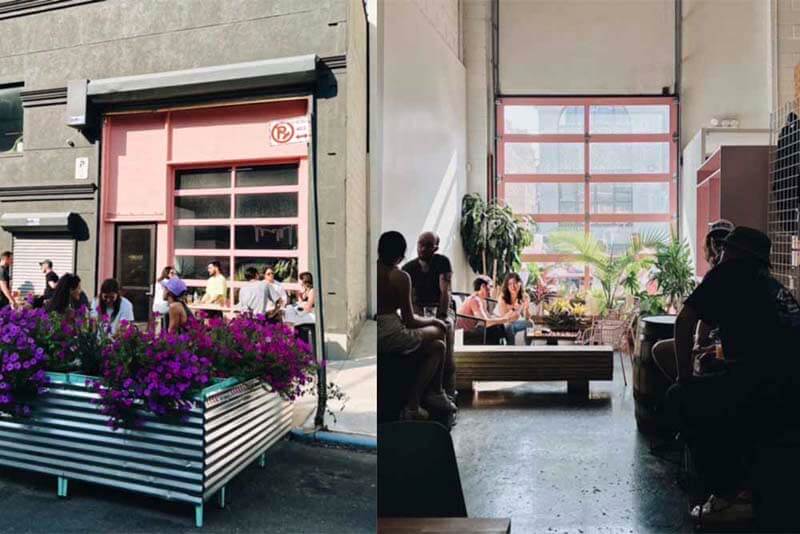
Finback Brewery’s second location in the Gowanus neighborhood of Brooklyn, NY | Photography courtesy of Finback Brewery
Like Kiley mentioned, you need a specific purpose to open up a new location. You can’t just invest in a new space because everyone’s doing it, for example. You have to decide if it’s right for your business.
But there are a variety of advantages to managing multiple taprooms.
Expand Your Reach in Existing and New Markets
When Finback first opened in 2013, Lee originally wanted to be in Gowanus but simply couldn’t find a functional spot that fit the budget. As a result, after looking at over 100 properties in two years, he and his business partner Kevin Stafford settled on an old food manufacturing plant in the Glendale neighborhood of Queens. It’s a very tucked-away, residential area away from major subway stops, highways, and transportation.
In other words, Finback’s first location became a destination brewery. Unless a local in the neighborhood, it was a venue people had to really plan to visit.
“When we ended up in that location, we were suddenly not sure,” says Lee. “It wasn’t this easy place to get to.” Everything ended up working out in Queens, with Finback becoming a local, community hangout and a spot where true craft beer fans made a pilgrimage.
But when Stafford approached Lee about a new taproom, they knew immediately they wanted to look in Brooklyn.
They both wanted to find a place more accessible to their established fans and potentially new ones.
“The main part of the second place was location,” says Lee, who noted it actually only took them two weeks to find the perfect place this time around. “[We wanted to] find a location more conducive and easy for people to get to…an alternative for people who might not be able to get to Queens.”
And so far it’s working. “Brooklyn definitely has more traffic for sure,” says Lee. “On average Brooklyn is more active because it’s easier to get to, [especially] by public transit, and Gowanus is more dense than Glendale.” There are simply more people in that area.
Likewise, for Monday Night, being in an easily accessible, urban area has always been top of mind in their expansion plans.
When they opened the Garage in Atlanta’s historic West End district in 2017, it was an opportunity to be part of an up-and-coming build-out along the city’s Beltline walking trail project, an area sure to attract a lot of foot traffic. “It ticked some of those boxes about community, meeting place, gathering, and we were able, in that location, to get a lot of space.”
In subsequent years when they expanded out of state to Birmingham, AL, and Nashville, TN, respectively, location was also top of mind.
“We chose medium to large metropolitan areas with higher traffic, near dense population centers,” says Kiley.
And here’s the key: They’ve gone into markets where they already have a successful wholesale distribution business. “There is some existing awareness of our brand and enthusiasm for it,” says Kiley. “Our experience of announcing each of our out-of-state taproom locations is that there has been a general excitement. [People] have had the beer, like the beer, and feel connected to the beer; they’re happy we’re coming.”
It’s a strategy that’s paid dividends, literally.

Monday Night Brewing’s second location in Atlanta, GA | Photography courtesy of Jonathan Baker, Monday Night Brewing
Balance Revenue Streams, Move More Beer
Opening up multiple locations also opens up your opportunities to generate more revenue.
For Finback, the Brooklyn location means another venue where they can provoke sales at a higher rate.
“We can only sell so much beer through our taproom in Queens,” says Lee. “Having another location helps us move more beer direct to consumers.”
In both Birmingham and Nashville, Kiley says when they opened their new taprooms, their wholesale sales grew on top of that. “There is a deepening of the connection to our brand in that market, a greater awareness of our product in that market, and so our taproom and our wholesale business are growing at the same time,” she says.
Finding harmony between off- and on-premise sales has paid off for Monday Night. “We have tried to be intentional about our wholesale business, but we have ramped up the taproom model because we found it’s a good balance for your business,” says Kiley. “Having taprooms and wholesale business is a nice balance of revenue streams.”
And in the Southeast, a particularly crowded market, Kiley says that most regional brands at their age (Monday Night has been open for just shy of twelve years) or even younger brands are all launching locations in multiple states. You need to expand to help you compete.
In January 2022, Resident Culture Brewing Company opened up its second location in the South End neighborhood of Charlotte, NC. The place has been rocking. “It’s exponentially busier over there,” Co-Founder Phillip McLamb shared with us for a Hop Culture piece we wrote back in March.
And now, according to Kiley, Monday Night brewing will be opening their own spot in the South End in the first quarter of 2023.
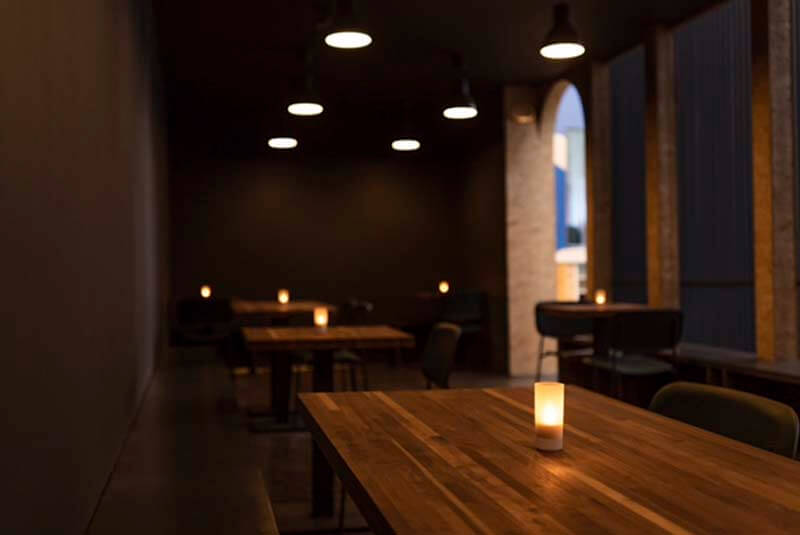
The vibe in Finback’s new Brooklyn location is much more intimate and design conscious | Photography courtesy of Finback Brewery
Different Spaces Can Have Different Vibes, Diversify Your Business
Different spaces allow you to invite different crowds and also experiment with different styles, diversifying your business all around.
For example, according to Kiley, Monday Night’s original location attracts Georgia Tech students, young professionals, and people on their way home from work. Based on the demographics of the neighborhood, the crowd tends to be white. Whereas the Garage, in the West End, sees more families and people with kids and dogs because it’s connected to a wider outdoor space. Along with more Black drinkers because of the demographics of the neighborhood. “I know our staff and customers reflect that demographic difference,” says Kiley.
Similarly, at Finback the Brooklyn space provides an opportunity for Finback to explore other passions such as coffee, distilling, and food (Lee’s mom actually runs the dumpling program).
So whereas the Queens location feels more like a neighborhood attraction, more inviting to residential families, the Brooklyn one has the tendency to bring in younger, more eclectic crowds.
And they’re designed as such. In Queens, the taproom is pretty stark with a lot of white walls, corn hole boards, picnic tables, and shared benches. “It’s your pretty clean, typical brewery space,” says Lee.
In Brooklyn, with The Studio,”we wanted to make a place where people could enjoy themselves,” says Lee. “The lighting, the music, the warm and cozy feeling of walking into a space hanging out with friends and drinking what you want.”
It’s a totally different vibe and accordingly attracts a different crowd.
What Are the Challenges to Running Multiple Locations?
You Can’t be in Two, Three, or Four Places at Once
It’s just impossible. If you’re managing multiple locations, you will need to hire the right teams to make all these establishments function appropriately.
“There was a period of time where…before anyone worked here I wanted to talk to them; I wanted to interview everyone for every job,” says Kiley. “That’s impossible at this point.”
Instead, Kiley says they’ve actually added incremental roles onto their staff in anticipation of their growth.
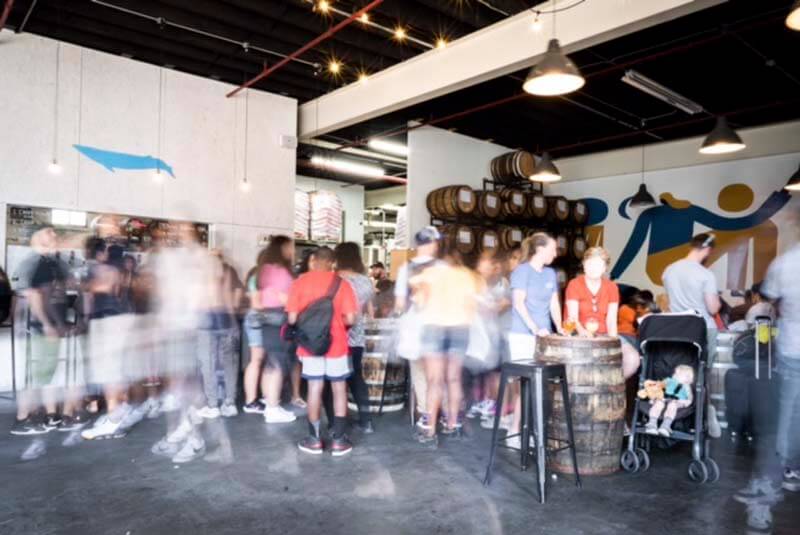
Finback’s original location in the Glendale neighborhood of Queens, NY | Photography courtesy of Finback Brewery
Those positions include an internal communications director responsible for onboarding and interviewing, a director of culinary to oversee all their kitchen managers at each location with a food program, and a director of hospitality who will work with the general managers at each location on an ongoing basis.
Another helpful tip: Even though Monday Night has taprooms in three different states, Kiley says they still managed to keep them all within a four-hour drive of Atlanta, her homebase. “We have our own truck and our own driver, so we can do deliveries,” says Kiley. “Keeping in that radius has been nice.”
Growing Too Fast
There is something to be said for expanding too fast. One can look at the recent example of Modern Times as a cautionary tale. The brewery ended up closing four of its locations in early 2022. In a public blog post, Modern Times cited “four straight years of rapid, costly expansion followed by an unforeseen and financially devastating global health crisis, and an industry-wide decline in sales” as the factors which led to shutting down these locations.
The brewery did keep their Point Luma, North Park, Encinitas, and Anaheim locations.
Another example would be Mikkeller, which recently announced the closing of their San Francisco taproom, on the heels of shuttering their only U.S. brewing facility in San Diego in August.
At the time, in a public statement on the company’s website, Mikkeller Founder and Creative Director Mikkel Borg Bjergsø cited the challenging times as a reason to reel back on the expansion. Instead focusing on Mikkeller’s then fifty-two breweries and restaurants in eighteen different countries.
“It is generally a very challenging time for production companies—and especially in light of the current market situation—it is necessary for us to look at the whole business and ensure that it is sustainable,” said Bjergsø. “After that, we can invest again in expanding the company and get Mikkeller’s beer out to even more people.”
It’s impossible to predict the future, but launching new locations can also come with the risk of expanding too fast beyond your means.
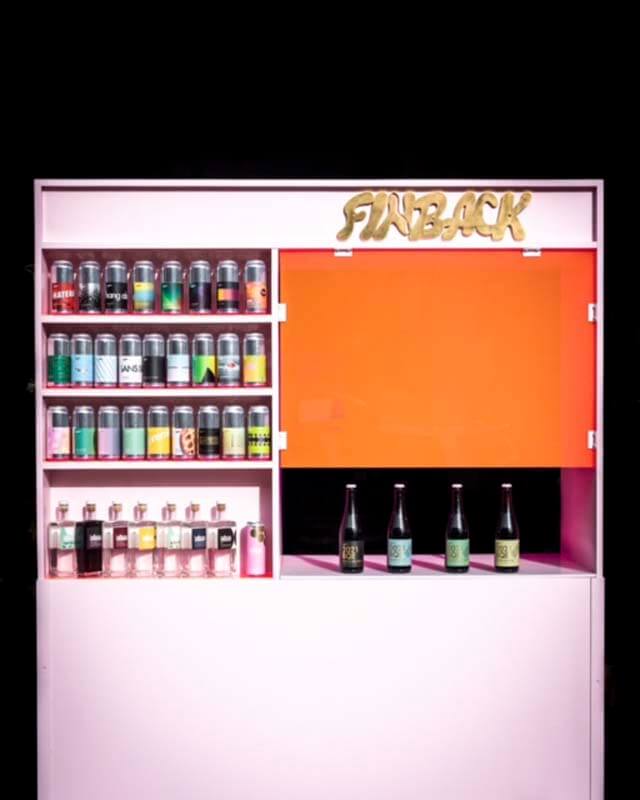
Photography courtesy of Finback Brewery
You Will Spend More Money
Lee laughs when he tells us about the difference between building out the original Queens location and the newer Brooklyn one. “We ended up spending more money on the second brewery than the first brewery, so we have a nicer brewhouse even though it’s a third of the size in the new spot,” he says.
It’s almost that catch-22 where you have more capital, so you’re willing to spend more.
Lee says that, in Queens, they didn’t have the money to make a lot of improvements in the beginning. The right floors, the right drains, the right brewhouse—that all came later.
But in Brooklyn, they just spent the cash right away to make those improvements. “The Queens taproom we wanted to be nice…but it was more about trying to open a brewery with a limited budget, so let’s just make it work,” says Lee, noting that in Brooklyn they spent more time carefully considering everything from the furniture to the music. “We were more confident, we understood our appetite for what we could do and we were willing to take this space even though the rent was more.”
It goes without saying that with a new location will come a series of new costs.
The Three Best Pieces of Advice for Managing Multiple Taprooms from the Experts
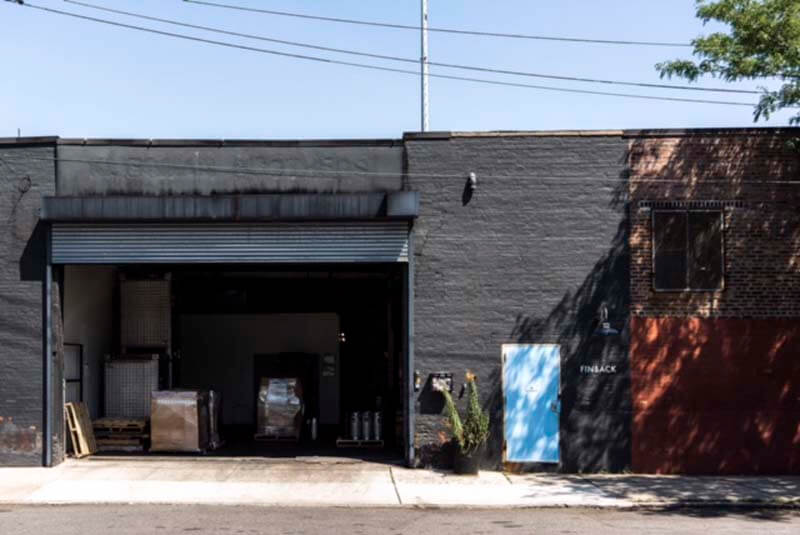
Finback’s original location in the Glendale neighborhood of Queens, NY | Photography courtesy of Finback Brewery
A few pieces of advice from what the experts have learned along the way.
1. Make Sure Your Standards and Standard Operating Procedures (SOPs) Are Written and Codified Before You Expand
Kiley says that, like any business owners, they’ve made loads of mistakes along the way, but one of the things they absolutely got right was getting ahead of the expansion with planning and SOPs.
“In beer especially it can feel like you’re just fighting for your life and working so hard,” says Kiley, who noted that while opening the Nashville location, she was on site for ninety hours a week. “If you don’t have your SOPs, your job descriptions, your joint documents, [etc.] on hand before you open, you’re not going to do it in time for when you really need it.”
And that applies to more than just your operating procedures. Make sure that you also have your missions and goals clearly documented.
“When things are already a little out of hand, be able to articulate your culture and be really fierce about keeping your arms around it throughout the process because it will be the first thing to go when every other aspect about building out a location pops up,” she says.
With that in mind, Kiley noted they started using a learning resource management tool that has everything documented about what it looks like to work at a Monday Night taproom. It’s something they give all new hires.
And it doesn’t have to be boring. In Nashville, Kiley says she created a special welcome box for all new hires complete with that full onboarding packet showcasing their high-level culture values and story along with helpful one-page sell sheets and two cans or bottles of all the Monday Night beers, plus some merch. “When they came in to sign the paperwork, we sent them home with that [welcome box],” says Kiley, mentioning they received great feedback from the staff on that personal touch. “It’s fun when starting a new job to share that with a partner, a friend, a roommate, and drink at your own pace and form your own impressions.”
It’s a practice that worked so well, Kiley will be repeating it when Monday Night opens in Charlotte.
2. Hire Your Leadership Early and Train Them Well
Especially if you plan on going beyond two locations, you only have so many hands, so many hours in the day, and so many opportunities to be in more than one place.
Kiley recommends hiring your leadership early in the buildout, but not too early.
And she would know. Monday Night has done it both ways.
In Birmingham, they hired too early and had new hires sitting around for weeks. While in Nashville they hired too late and ended up with only three days to train people before their opening day.
“It was an unnecessary fire drill,” she says. So it’s important to identify a respectable lead time and stick to it to alleviate stress.
Plus, having an appropriate training period will engender leadership to stick around. These will be your eyes and ears in your locations when you can’t be present, so you want to trust them to do their jobs.
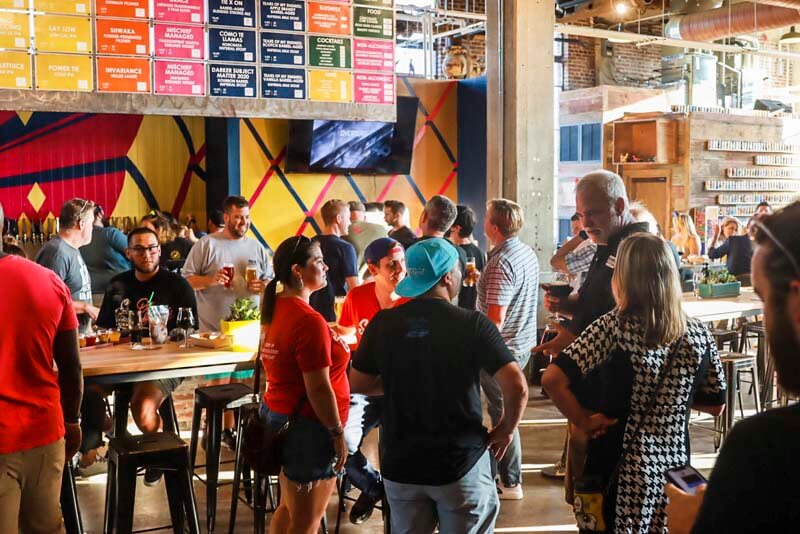
Photography courtesy of Jonathan Baker | Monday Night Brewing
3. Open on a Friday in Your Busiest Season
Perhaps the best piece of advice Kiley can give is to avoid a slow opening.
“I’ve said it so many times that people tease me, but don’t open when it’s slow,” says Kiley. “If it’s not successful from the beginning, it will be so much harder to be a hit.
With that in mind, Kiley recommends figuring out the busiest season and weekday in your city. Then open on one of those days.
“I don’t think there is any wisdom in opening late fall or winter to allow you to get your legs,” she says. “March is the busiest time of year for breweries in the Southeast, so open in March and open on a Friday.”
She continues, “If you want to be a hit, be a hit.”
Make All of Your Taprooms Your Greatest Hits
Ollie is brewery management software built by brewers, for brewers. From robust inventory management to automated reporting, Ollie is the ultimate tool to ensure your brewery business never misses a beat. Check out a free demo today and learn why breweries all over are making the hop to Ollie.



